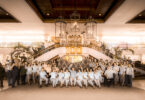Everybody has a watch, but not everybody sports a $44,900, 18kt white gold, Patek Philippe Twenty-4. Everybody drinks out of a glass, but not everybody sips sundowners from an elegant, Baccarat Abysse crystal tumbler. Everybody sleeps, but not everybody retires to a hand-made Hästens bed…
You may also like
Law Connect claims Line honours in Sydney to Hobart...
4 months ago
ROLEX SYDNEY HOBART YACHT RACE: COMPELLING APPEAL
4 months ago
One Entrepreneur’s Mission to Take AI Outdoors
6 months ago
by Staff Writer
Centara Grand Beach Resort & Villas Hua Hin-A...
7 months ago
CENTARA GRAND BEACH RESORT HOTEL AND VILLAS -AN...
7 months ago
Connoisseur magazine needs your support -Please Donate
1 year ago







